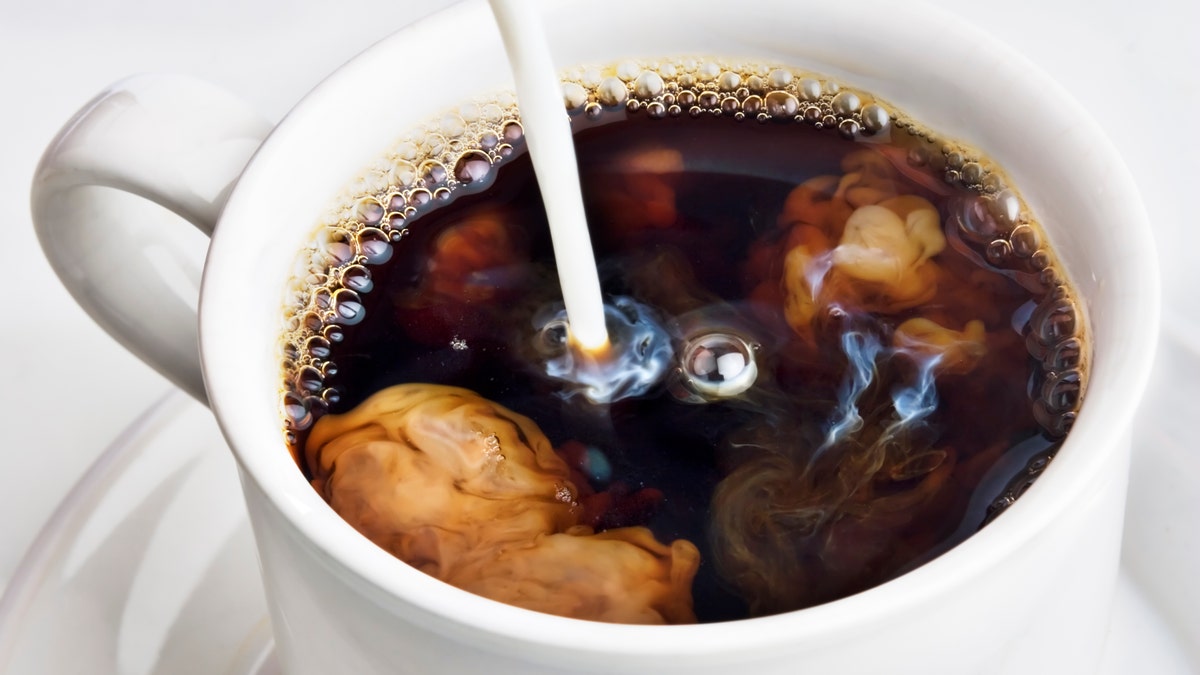
(David Crockett)
Some people like their coffee black. But maybe you're not one of them. Maybe for you, a cup of coffee isn't really coffee until you've stirred in some of your beloved coffee creamer.
We get it. People get a little cultish about their favorite java juicer-uppers. Even if you've cleared your kitchen of every other packaged, highly processed concoction, you might still have that container of conventional coffee creamer that you reach for every morning. Sure, you feel a little guilty because you know it's made with some weird garbage. But, you reason to yourself, you don't use that much (and hey, it could be worse—you could be adding these 5 absolute worst things you can add to your coffee). It's not that big a deal.
And yeah, using conventional coffee creamer isn't the end of the world. But you can do better. This list of unsavory additives and ingredients just might give you the push you need. (Lose up to 15 pounds in just 30 days with this revolutionary superfood plan from the publisher of Prevention!)
Weird thickeners
Surprise—most store-bought coffee creamers aren't actually made with cream. Instead, they get their rich, velvety mouthfeel from thickening agents and emulsifiers like carageenan, a thickener thought to cause inflammation and digestive problems.
Other common ingredients, while generally considered safe, are just plain gross. Cellulose gel and cellulose gum are fillers derived from wood pulp or cotton. Polysorbate 60 is a sugar alcohol-derived emulsifier that's used to keep water and oil from separating in conventional cosmetics. Do you really want to be drinking that stuff on a daily basis? (Yuck, check out these 31 Foods You're Eating That Contain Sawdust.)
Artificial flavors
That comforting caramel, hazelnut, or mocha aroma that makes waking up at the crack of dawn slightly more bearable? Sure, it could be derived from natural sources. But chances are, the tantalizing smell—and flavor—is completely, 100% fake.
That's bad news if you're trying to eat cleaner. Artificial flavors can make processed foods taste bolder and more flavorful than their unprocessed counterparts, say experts at the Environmental Working Group. And when you're used to that kind of in-your-face taste, simple, unprocessed foods can seem pretty bland by comparison.
Bizarre preservatives
A carton of real milk or cream will stay fresh for at least a week in the refrigerator. But unless you're guzzling coffee creamer like water, there's no way you're gonna finish that giant container in a mere 7 days. Food manufacturers know this, so they make life easy by adding mold inhibitors like sodium stearoyl lactylate and dipotassium phosphate.
The good news is that both of these ingredients score pretty low on the health hazard scale. Still, why bother consuming them at all when there are perfectly delicious alternatives out there that are preservative-free? (More on those later.)
Partially hydrogenated oils
Thickeners alone can't make a cream-free liquid taste luxuriously creamy, which is where partially hydrogenated oils, or trans fats, come in. These highly processed fats are downright dangerous, raising levels of bad cholesterol, and put you at higher risk for heart disease. That's why most experts say you should avoid them completely. Even in your coffee. (Even if you think you’re not eating trans fat, here are 8 ways you probably still are.)
Artificial sweeteners
In an effort to make coffee creamers ultra-sweet and delicious without turning them into sugar- and calorie-bombs, manufacturers rely on fake sweeteners like sucralose. Problem is, sucralose can still cause your blood sugar to spike, which findings suggest could up your risk for type 2 diabetes. Makes a simple spoonful of the real sweet stuff seem not so bad, right? (If your blood sugar is spiking, stabilize it with THIS spice.)
The better way to flavor your coffee
Hopefully, you just took a break mid-read to go toss that half-empty carton of creamer in the garbage. But if the mere thought of trying to drink your morning mud black is still making you gag, you're gonna need an alternative.
You could always do a basic splash of milk or cream and a teaspoon of sugar. But when that's not gonna cut it, you still have options.
How about making your own coffee creamer? Recipes for flavored, homemade coffee creamers abound, and some can get pretty involved. Happily, you can keep it clean and simple by simmering your milk or cream of choice (coconut milk is amazing here) with sugar and vanilla beans to taste, then storing the mixture in an airtight container in the fridge for a week or so. Once your coffee's ready, just stir in a spoonful (or two) of creamer. Then, get ready to head to your happy place.
